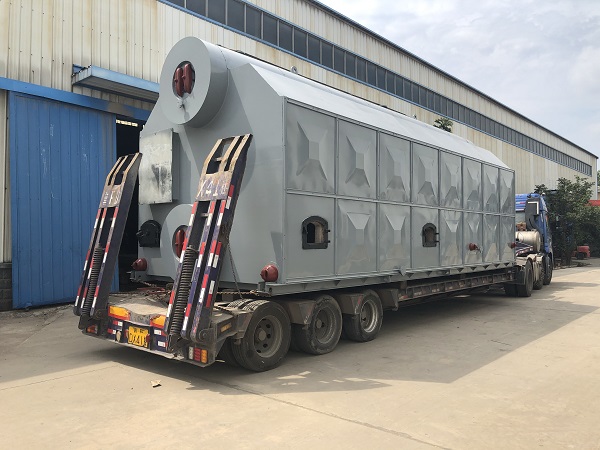Guide: Waste heat boiler is a general term for equipment that uses waste heat generated in the production of various industries to heat boiler water to produce steam or hot water.
Waste heat boiler is a general term for equipment that uses waste heat generated in various industries to heat boiler water to produce steam or hot water. There are many types of it, each with different steam and water processes, so it is only explained for different furnaces.
The equipment feed water first enters the economizer, and the water absorbs heat in the economizer and heats up to a temperature slightly lower than the saturation temperature under the pressure of the steam drum and enters the drum. After the water entering the drum is mixed with the saturated water in the drum, it enters the evaporator along the downcomer below the drum to absorb heat and start to produce steam. Usually only a part of the water turns into steam, so a mixture of soda and water flows in the evaporator. . The steam-water mixture leaves the evaporator and enters the upper drum and is separated by steam-water separation equipment. The water falls into the water space in the drum and enters the downcomer to continue to absorb heat and produce steam, while the steam enters the superheater from the upper part of the drum and absorbs heat to turn saturated steam into superheated steam. .
The high-temperature flue gas released by the combustion of coal is transported to the inlet of the waste heat boiler through the flue, and then flows through the heater, evaporator and economizer, and is discharged into the atmosphere through the chimney. The flue gas temperature is generally 150~180℃, and the flue gas temperature The heat released from the high temperature drop to the exhaust gas temperature is used to turn the water into steam.
In application, it is necessary to adhere to the normal temperature and pressure of the waste heat boiler, balance the water supply, and adhere to the normal water level of the steam drum; pay attention to the control of the outlet temperature of the superheater, the outlet temperature of the economizer, and the boiler feed water temperature to avoid over-temperature tube bursts and low temperature The oxygen content in the feed water caused by the occurrence; adopt anti-wear measures and check when the boiler is shut down or annual repairs to avoid severe wear of the boiler equipment caused by particles in the circulating gas.





























